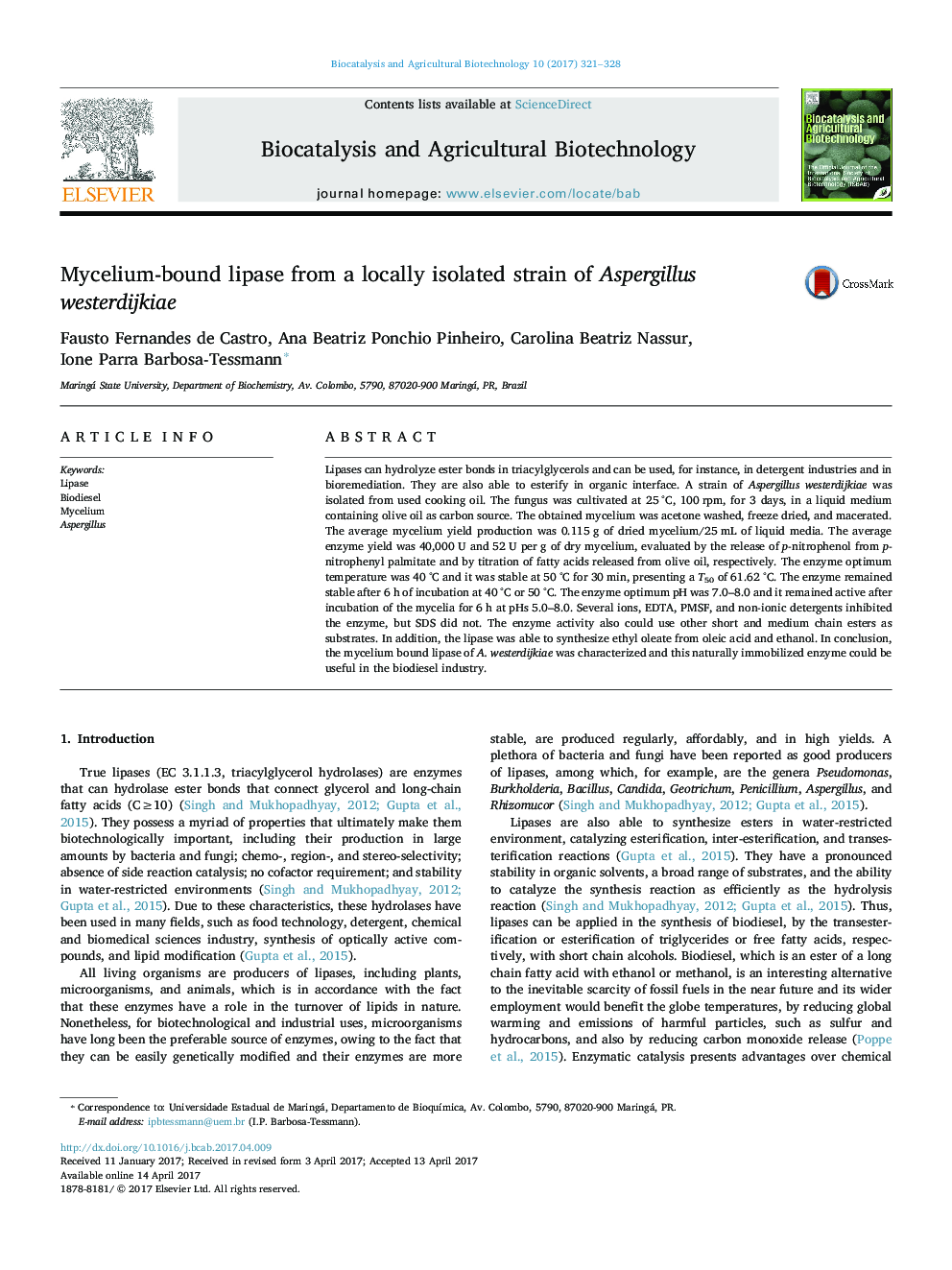| Article ID | Journal | Published Year | Pages | File Type |
|---|---|---|---|---|
| 5520473 | Biocatalysis and Agricultural Biotechnology | 2017 | 8 Pages |
Lipases can hydrolyze ester bonds in triacylglycerols and can be used, for instance, in detergent industries and in bioremediation. They are also able to esterify in organic interface. A strain of Aspergillus westerdijkiae was isolated from used cooking oil. The fungus was cultivated at 25 °C, 100 rpm, for 3 days, in a liquid medium containing olive oil as carbon source. The obtained mycelium was acetone washed, freeze dried, and macerated. The average mycelium yield production was 0.115 g of dried mycelium/25 mL of liquid media. The average enzyme yield was 40,000 U and 52 U per g of dry mycelium, evaluated by the release of p-nitrophenol from p-nitrophenyl palmitate and by titration of fatty acids released from olive oil, respectively. The enzyme optimum temperature was 40 °C and it was stable at 50 °C for 30 min, presenting a T50 of 61.62 °C. The enzyme remained stable after 6 h of incubation at 40 °C or 50 °C. The enzyme optimum pH was 7.0-8.0 and it remained active after incubation of the mycelia for 6 h at pHs 5.0-8.0. Several ions, EDTA, PMSF, and non-ionic detergents inhibited the enzyme, but SDS did not. The enzyme activity also could use other short and medium chain esters as substrates. In addition, the lipase was able to synthesize ethyl oleate from oleic acid and ethanol. In conclusion, the mycelium bound lipase of A. westerdijkiae was characterized and this naturally immobilized enzyme could be useful in the biodiesel industry.
